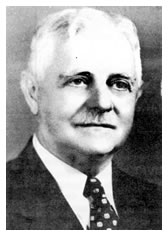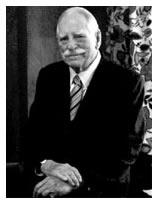History | Connections
 How is this locomotive connected to WBT?
How is this locomotive connected to WBT?
Did it deliver the station's transmitter? No. As far as we know, the engine was never nearer than 90 miles to the radio station.
Actually, the engine was one of several that pulled the trains on the Atlantic & Yadkin, one of North Carolina's many short line railroads. Established in 1899, the A&Y was a subsidiary of the Southern Railroad and ran from Mt. Airy to Sanford.
The president of the Atlantic & Yadkin—a former SR telegrapher and ticket agent—from 1919 until his death in 1946, was a man from Greensboro named Julian Price.
Several other A&Y officers and directors called Greensboro home, including the A&Y's treasurer, Joseph M. Bryan—who was also Price's son-in-law.
In addition to his duties at the A&Y, Price simultaneously worked for the Greensboro Life Insurance Company.
Another insurance company, Jefferson Standard, had been founded in Raleigh in 1907 by brothers P. D. and Charles W. Gold, members of a prominent newspaper family from Wilson. It began with half a million dollars in capital, the largest corporation ever to have been established in North Carolina. At the time, only 111 life insurance companies existed in the entire country when it opened its doors (compared to about 2,000 in the early 1990s).
In 1912 Jefferson Standard merged with two other companies, one of which was Greensboro Life, thus acquiring the services of Julian Price. Only seven years later, in 1919, Price was named Jefferson Standard's president. He played a pivotal role in the company's growth and success until his death in 1946.
In 1934 Jefferson formed a subsidiary, Southeastern Broadcasting Co., and named Joseph Bryan its president. As its first acquisition, Southeastern purchased WBIG, which then was Greensboro's only radio station. And in 1935, just a year before Julian Price's accidental death, it bought Charlotte's WBT from the Columbia Broadcasting System. Shortly thereafter, Southeastern was renamed to Jefferson Standard Broadcasting.
In 1949 the broadcasting company brought the first television station to the Carolinas. In the latter half of the 20th century the company expanded its ownership of radio and TV properties across the country.
Sources:
Southern Railway - Railfan
Funding Universe
North Carolina Business History
Wikipedia
Bryan Park


 How is this
How is this